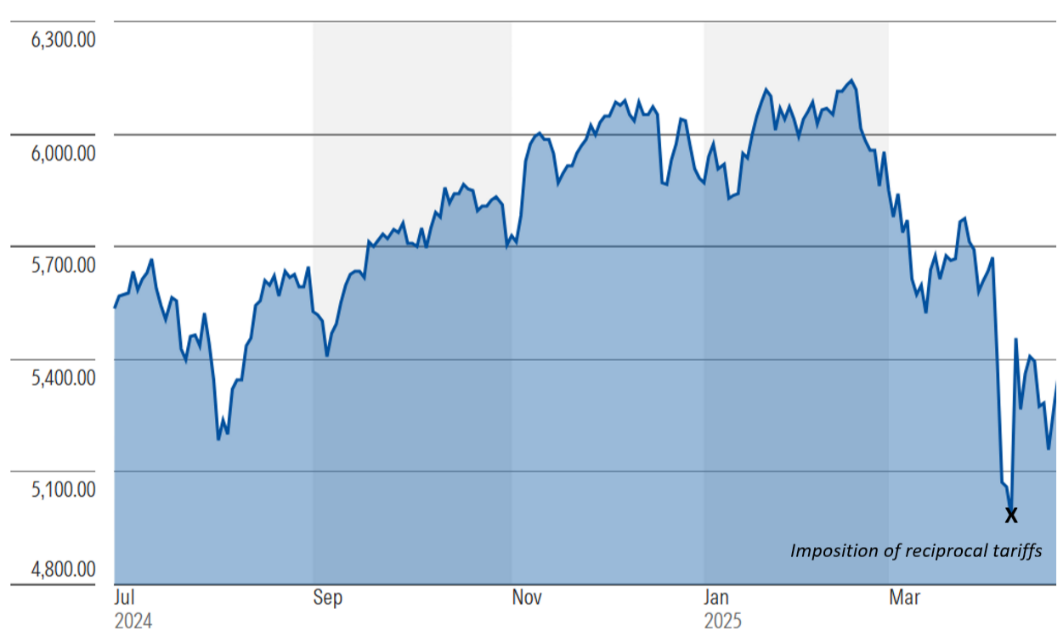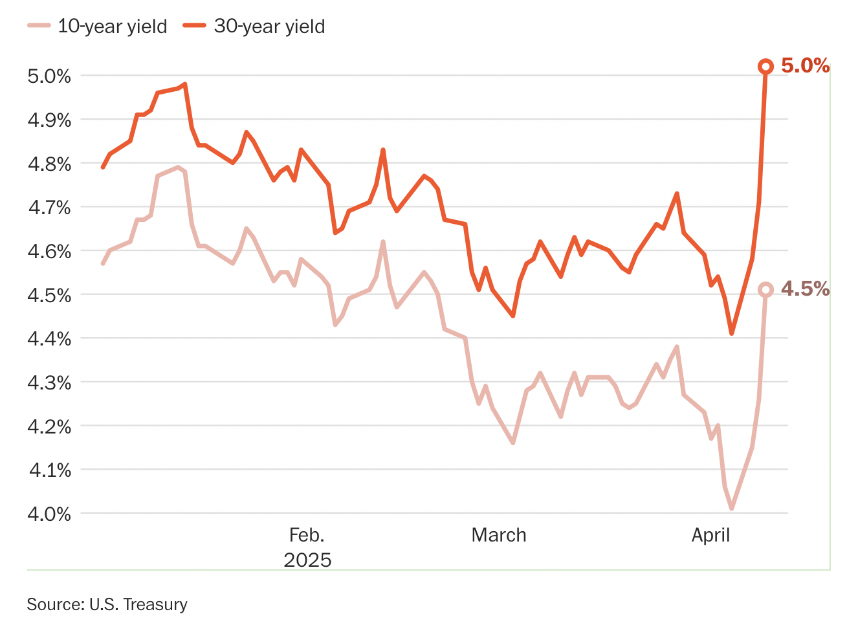Tariff-ifying Markets: How Trump's Trade Policies launched a Rollercoaster in 2025

When Donald Trump returned to the political spotlight in early 2025, so did one of his most controversial economic weapons: tariffs. Promising to “bring jobs back to America” and counter what he called “unfair trade practices,” Trump proposed sweeping new tariffs – targeting imports from over 185 countries.
The aim? To reduce America’s trade deficit and revive domestic manufacturing. But in practice, tariffs are a tax on imports—driving up prices for consumers and businesses, throwing global supply chains into disarray, and shaking up financial markets with uncertainty.
But are tariffs really a smart move or just costly political theatre?
Tariffs: When They Make Sense (and When They Don’t)
Tariffs aren’t always inherently bad. Historically, countries like South Korea and Japan used them effectively to protect their emerging industries. In times of war, tariffs protect critical sectors like steel and defence. In some developing countries, tariffs even help fund basic government services.
However, tariffs are widely viewed as detrimental to short-term growth and long-term competitiveness. Research spanning five decades and over 150 countries show tariffs tend to slow output for years. Even Adam Smith warned back in the 1700s that tariff hikes inflict lasting damage — a view the IMF economists still stand by today.

While trade policy may seem like a niche interest reserved for economists and policy wonks, its effects ripple across the global economy, influencing everything from inflation, rattling markets to even the price of your next iPhone.
Market Turmoil
Financial markets hate one thing above all: uncertainty. And Trump’s 2025 tariff bombshell delivered exactly that.
The S&P 500, fresh off record highs in January, took a nosedive — plunging over 10% in just a few days. Key sectors like semiconductors, green tech, and consumer electronics took the hardest hits, with tech giants and companies tied to global supply chains suffering the most. U.S manufacturers briefly rallied before panic set in again.
The ASX 200 wasn’t spared either, mirroring the chaos, it tumbled more than 9% as fears of a slowing global economy and falling commodity prices spooked investors.

Bonds and Gold: The Safe Havens
Bonds usually act as a haven when markets get rocky — but this time, they’ve been rattled too. Bonds are loans to governments or companies, with investors earning interest known as the “yield.” Normally, when bond yields rise, bond prices fall. It’s a see-saw relationship.
After Trump’s tariff announcements in early 2025, U.S. 10-year Treasury yields surged from 3.9% to 4.47% in just a few days, meaning it became more expensive for the U.S. government to borrow. Australian bond yields also climbed, rising from 4.1% to 4.48%. Investors spooked by the uncertainty demanded higher returns for lending, especially from riskier corporate bonds.

In times of chaos, one thing tends to shine — literally. Gold prices soared by 40% to all-time highs in early 2025 as investors rushed into safe-haven assets.
Why gold? It doesn’t pay interest, but it does hold value when currencies weaken and inflation rises. Amid tariff-fuelled tensions and unpredictable tweets, gold became the financial equivalent of hiding under your doona.
Inflation Nation
Tariffs are taxes on imports, which raise prices on foreign goods. Businesses either pass those costs on or absorb them — but either way, someone ends up paying more.
With many countries still battling cost-of-living pressures post-COVID, tariffs risk reigniting inflation just as central banks were starting to ease interest rates. The result? Stagflation — where rising prices coincide with stagnant growth, creating challenges for both consumers and policymakers.
The Global Trade Shuffle
Tariffs didn’t just shake the markets; they also sped up a global trade reshuffle away from the U.S. as the dominant trade partner. The UK is seeking closer EU ties post-Brexit, China, Japan, and South Korea are pushing a trilateral free trade deal and Germany plans to loosen its “debt brake” to increase defence spending.
This “tit-for-tat” dynamic could strain global supply chains, particularly in industries like electronics, pharmaceuticals, and green tech.
What this means for Australia
Tariff policies might seem distant from daily uni life, but we’re far from immune.
Aussie exporters may face higher barriers getting products into the U.S., forcing them to pivot operations. Your next iPhone might edge closer to the $2,000 mark. Superannuation funds, heavily exposed to global markets, face increased volatility. And career prospects in trade, supply chain, and export-heavy industries could face new challenges as companies restructure.
When Donald Trump returned to the political spotlight in early 2025, so did one of his most controversial economic weapons: tariffs. Promising to “bring jobs back to America” and counter what he called “unfair trade practices,” Trump proposed sweeping new tariffs – targeting imports from over 185 countries.
The aim? To reduce America’s trade deficit and revive domestic manufacturing. But in practice, tariffs are a tax on imports—driving up prices for consumers and businesses, throwing global supply chains into disarray, and shaking up financial markets with uncertainty.
But are tariffs really a smart move or just costly political theatre?
Tariffs: When They Make Sense (and When They Don’t)
Tariffs aren’t always inherently bad. Historically, countries like South Korea and Japan used them effectively to protect their emerging industries. In times of war, tariffs protect critical sectors like steel and defence. In some developing countries, tariffs even help fund basic government services.
However, tariffs are widely viewed as detrimental to short-term growth and long-term competitiveness. Research spanning five decades and over 150 countries show tariffs tend to slow output for years. Even Adam Smith warned back in the 1700s that tariff hikes inflict lasting damage — a view the IMF economists still stand by today.

While trade policy may seem like a niche interest reserved for economists and policy wonks, its effects ripple across the global economy, influencing everything from inflation, rattling markets to even the price of your next iPhone.
Market Turmoil
Financial markets hate one thing above all: uncertainty. And Trump’s 2025 tariff bombshell delivered exactly that.
The S&P 500, fresh off record highs in January, took a nosedive — plunging over 10% in just a few days. Key sectors like semiconductors, green tech, and consumer electronics took the hardest hits, with tech giants and companies tied to global supply chains suffering the most. U.S manufacturers briefly rallied before panic set in again.
The ASX 200 wasn’t spared either, mirroring the chaos, it tumbled more than 9% as fears of a slowing global economy and falling commodity prices spooked investors.

Bonds and Gold: The Safe Havens
Bonds usually act as a haven when markets get rocky — but this time, they’ve been rattled too. Bonds are loans to governments or companies, with investors earning interest known as the “yield.” Normally, when bond yields rise, bond prices fall. It’s a see-saw relationship.
After Trump’s tariff announcements in early 2025, U.S. 10-year Treasury yields surged from 3.9% to 4.47% in just a few days, meaning it became more expensive for the U.S. government to borrow. Australian bond yields also climbed, rising from 4.1% to 4.48%. Investors spooked by the uncertainty demanded higher returns for lending, especially from riskier corporate bonds.

In times of chaos, one thing tends to shine — literally. Gold prices soared by 40% to all-time highs in early 2025 as investors rushed into safe-haven assets.
Why gold? It doesn’t pay interest, but it does hold value when currencies weaken and inflation rises. Amid tariff-fuelled tensions and unpredictable tweets, gold became the financial equivalent of hiding under your doona.
Inflation Nation
Tariffs are taxes on imports, which raise prices on foreign goods. Businesses either pass those costs on or absorb them — but either way, someone ends up paying more.
With many countries still battling cost-of-living pressures post-COVID, tariffs risk reigniting inflation just as central banks were starting to ease interest rates. The result? Stagflation — where rising prices coincide with stagnant growth, creating challenges for both consumers and policymakers.
The Global Trade Shuffle
Tariffs didn’t just shake the markets; they also sped up a global trade reshuffle away from the U.S. as the dominant trade partner. The UK is seeking closer EU ties post-Brexit, China, Japan, and South Korea are pushing a trilateral free trade deal and Germany plans to loosen its “debt brake” to increase defence spending.
This “tit-for-tat” dynamic could strain global supply chains, particularly in industries like electronics, pharmaceuticals, and green tech.
What this means for Australia
Tariff policies might seem distant from daily uni life, but we’re far from immune.
Aussie exporters may face higher barriers getting products into the U.S., forcing them to pivot operations. Your next iPhone might edge closer to the $2,000 mark. Superannuation funds, heavily exposed to global markets, face increased volatility. And career prospects in trade, supply chain, and export-heavy industries could face new challenges as companies restructure.






